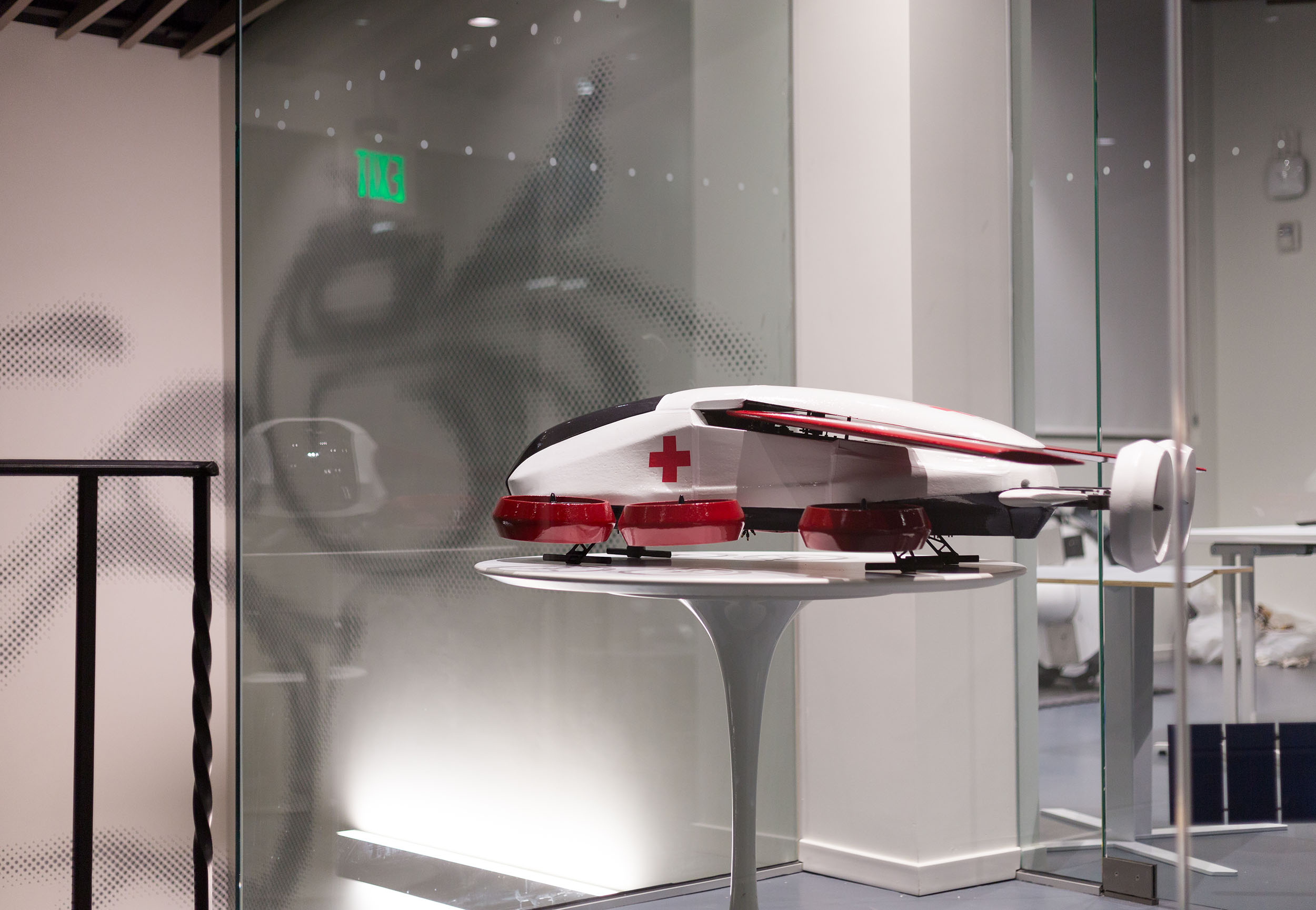Overview
Principal Investigator: Soon-Jo Chung
Current Team Members: Patrick Spieler (Design Lead), Dr. Matt Anderson, Ellande Tang, and Xichen Shi
Previous Team Members (AFA Ver 1.0-3.0): Kyunam Kim, Joel Burdick, Salar Rahili, Mory Gharib’s Research Group
Recent advances in autonomous car and drone technologies and electric airplane fans are turning a century- old dream of flying cars into reality, with many existing projects. Our vision is to lay the groundwork for realizing fully-autonomous VTOL flying ambulances. The same technology can be used to realize next-generation Mars helicopters for scientific sample collection, electric flying cars or package-delivery drones that are aimed at short-distance travel from one location to another. Society will immensely benefit from the improved mobility and efficiency of the proposed flying ambulances and autonomous air transportation systems deployed in congested cities, as road congestion is poised to become one of the most important societal challenges.
Every year, 1.2 million motor vehicle deaths are reported worldwide and 94% of car accidents in the U.S. involve human error. Self-driving car technologies have the potential to dramatically reduce the rate of traffic accidents and remove barriers to driving for the disabled or elderly. However, autonomously driving cars could be increasingly stuck on congested roads. Road congestion is poised to become one of the most important societal challenges as 60% of the world’s population will be living in cities by 2030, engendered by the haphazard pattern of urban sprawl and the increasing number of cars. Even now, Los Angeles residents spend seven whole working weeks each year commuting; two of which are wasted in traffic congestion. So the natural question arises: can we leverage the technological advances in self-driving cars and unmanned air vehicles towards solving the gridlock problem of future urban cities?
Urban air transportation systems already exist in limited contexts. For instance, Sao Paulo in Brazil boasts one of the largest commercial helicopter ride-sharing networks, which enables a trip that would normally take 2 hours in Sao Paulo’s agonizing road traffic to be completed in just 15 minutes for a fare of $63. Unfortunately, helicopters with big rotor blades are too costly, slow, noisy, and accident-prone. Hence human-piloted helicopters are unsuitable as a mainstream means of transportation. Now imagine a future with door-to-door, unhindered, frictionless flying ambulances or personal aerial travel realized by fully- autonomous pilot-less aircraft that can capitalize on the three-dimensional airspace with aplomb, equipped with vertical take-off and landing capabilities and zero-emission, low-noise distributed electric fans.
Our research program addresses the challenges underlying autonomous aerial urban transportation systems that can seamlessly be integrated with other transportation modes. The major difference between research on autonomous drones (e.g., for package delivery application) and our proposed work in smart and autonomous Urban Aerial Mobility (UAM) is that UAM must be integrated with the existing means of transportation (notably ground-based cars and other physical skyways for unmanned aerial vehicles) in a complex 3D world including urban canyons, congested road networks, and an increasingly complex airspace crowded with drones and commercial airplanes. From a technological standpoint, the broader impacts of our research include scalability and down-compatibility with two-dimensional robotic networks (e.g., autonomous cars) and other 3D unmanned systems. We believe that autonomous operation of flying ambulances in a restricted area (a major metropolitan city area) is easier than level-4 autonomy of self-driving cars because of the reduced complexity of the vertical airspace (no pedestrians, drivers, and other human factors). Further, compared with existing air traffic control systems, where human operators perform real-time control of airport congestion and prevention of mid-air collision, there is a much-reduced level of human factors involved in an automated UAM system.
We lay out a research program aimed at long-term autonomous operation and large-scale multi-vehicle routing problems of autonomous flying ambulance vehicles that can handle various uncertain weather and traffic conditions in real-time. The specific research tasks are:
Autonomy-Driven Vehicle Design
Scalable Autonomy and System-Level Experimentation
X. Shi, P. Spieler, E. Tang, E. S. Lupu, P. Tokumaru, and S.-J. Chung, “Adaptive Nonlinear Control of Fixed-Wing VTOL with Airflow Vector Sensing,” Proc. IEEE International Conference on Robotics and Automation (ICRA), Paris, France, 2020. (PDF) (Youtube Video)
G. Shi, X. Shi, M. O’Connell, R. Yu, K. Azizzadenesheli, A. Anandkumar, Y. Yue, and S.-J. Chung, “Neural Lander: Stable Drone Landing Control using Learned Dynamics,” Proc. 2019 IEEE International Conference on Robotics and Automation (ICRA), May 20-24, 2019, Montréal, Canada. (Extended version PDF) (VIDEO 1) (Video 2) (in collaboration with Anima Anandkumar and Yisong Yue)
Previous Design (AFA Ver 1.0 - Ver 3.0)
AFA V1.0-V3.0 Rendered Image (by Xichen Shi)
AFA Model Ver 2.0
In the news
Could Robots Save Us From Natural Disasters? https://www.kqed.org/news/11660802/will-robots-save-us-from-natural-disasters





